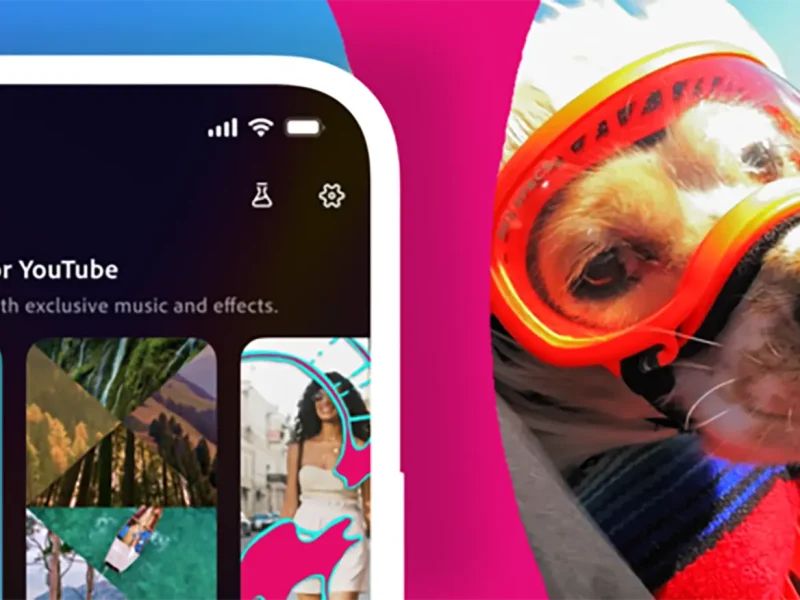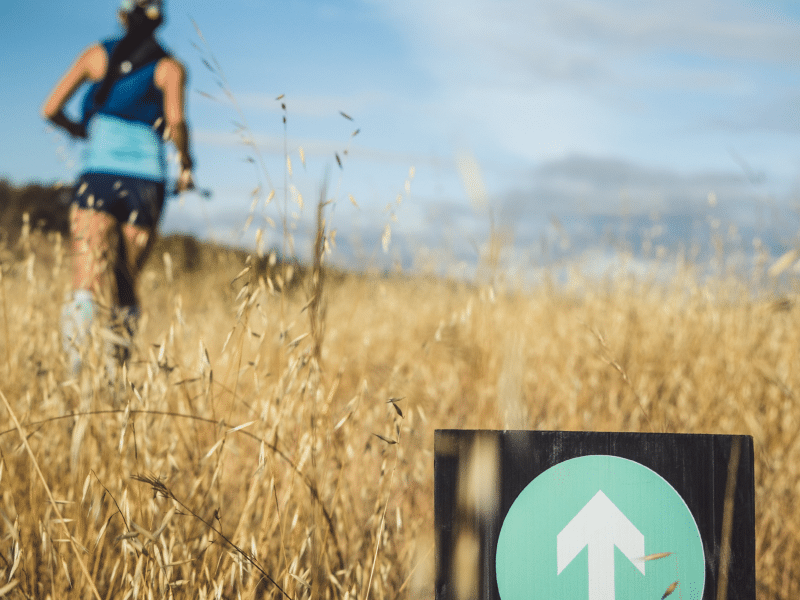What is the real value of podcast advertising for brands in 2021? Pretty valuable according to Kerning Cultures Network [KCN] – an independent podcast company in the Middle East that produces chart-topping podcasts that have won awards ranging from Apple Podcasts’ Show of the Year to Webby Awards Honoree for Diversity and Inclusion.
In order to help brands fully understand the untapped potential of podcast advertising , Hebah Fisher – the CEO and Co-Founder of KCN – and Bella Ibrahim – the Marketing Director of KCN – join me to discuss why podcasts are the number 1 advertising opportunity for brands and why they beat out platforms such as Instagram when it comes to impact.
To prove their point, the ladies from KCN give a deep-dive analysis of their latest podcast Saqr’s Eclipse and how Toyota Saudi Arabia benefited from doing a life-time sponsorship for its new hit series.
What is Saqr’s Eclipse?
A first of its kind production, Saqr’s Eclipse is a 9-episode fictional thriller podcast: set in Saudia Arabia’s Empty Quarter, social media star Faisal Saqr and a group of travelers embark on a perilous journey to reach a set of caves in the desert. The modern thriller expertly mixes both present and past – with Faisal’s influencer status juxtaposed with the ancient, mystical forces present in the legendary Empty Quarter.
Saqr’s Eclipse was a huge commercial success – both as a podcast and for its brand placement: it ranked #1 across 10 countries regionally and ranked #6 for trending fictional podcasts worldwide. Fisher also commented that Saqr’s Eclipse – whose script took nearly 1 ½ years to make – was created to be binge-worthy like a Netflix show. Their efforts were clearly successful – with many listeners writing in on how much they binge-listened to the series and how they even googled Faisal Saqr to see if he was a real person due to how lifelike the show was written.
Moreover, in order to quantify the commercial impact of Toyota’s placement within Saqr’s Eclipse, KCN paired their sponsorship with a brand lift survey – which collected data from both listeners and non-listeners of the podcast. Here were their results:
- Listening to Saqr’s Eclipse positively impacted Toyota’s brand image, outperforming automotive industry benchmarks by 24%
- Listening to Saqr’s Eclipse positively impacted Toyota buyer intention, particularly amongst women, and outperformed automotive industry benchmarks by 25%
- 93% of Saqr’s Eclipse listeners wanted to purchase a car, visit a showroom, or talk to a friend or family member about purchasing after listening to the podcast
What is the market for Podcasts – both regionally and globally?
There are currently 2 million active podcasts globally – with global podcast listenership growing 20-40% annually over the past 6 years. From this – it is clear that podcast consumption is on a fast upwards trajectory. However – despite this strong consumer demand – the podcast market is becoming increasingly saturated. With this in mind, how can brands find and choose podcasts that provide them the biggest return on their marketing spend?
Fisher and Ibrahim seem to think that the answer lies in the Middle East:
While podcasts have become the mainstream in the United States and in China, the market is still unsaturated in the Middle East – with only 3000 active podcasts in the MENA region. Despite this small number – KCN’s stats on podcast demand in the Middle East paint an entirely different picture: in the MENA region, KSA and the UAE are the two biggest markets, with 5.1 million and 1.3 million podcast listeners in each respective country listening to an average of 5-7 hours of podcasts a week.
At KCN, Egypt is their second top listening geography – with Oman, Jordan, Morocco, Algeria, and Kuwait also turning out big audiences. Most notably – Fisher and Ibrahim reveal that 87% of KCN’s lifetime downloads were from the past year alone.
From this – it is clear that podcast listenership is fast-rising in MENA and is indisputably media’s next big growth market. Podcasts – therefore – provide an invaluable marketing opportunity for brands – especially for brands based in the Middle East.
Podcasts vs. Other Social Media Platforms: Who offers higher engagement?
When it comes to the number of impressions, platforms like Instagram will historically outperform podcasts. However – the number of impressions doesn’t necessarily guarantee success for a brand’s marketing objectives. Engagement also plays a huge role:
According to Fisher, podcast listeners have higher engagement compared to other platforms. This is largely due to the nature of the content: the former captures the user’s long-term attention while the latter promotes mindless scrolling and reinforces the user’s short attention span.
A few things to note:
- The average Facebook user spends less than 3 seconds on any piece of content (Source: Adweek)
- 45% of social video views disappear after 1 minute (Source: AdAge)
- 94% of viewers skip video pre-roll ads (Source: Contently)
On the other hand:
- KCN episodes – which average between 20-45 minutes in length – have completion rates of 60-80%: on the low end, that’s still 12 complete minutes of user engagement
- Saqr’s Eclipse sponsorship had an ad recall of 92%, outperforming automotive industry benchmarks by 24% (brand lift survey).
Outside of KCN’s stats, podcast advertising still proves to promote higher ad recall and better brand awareness than a social media or video campaign:
- 81% of listeners take action after hearing a podcast ad (Source: Spotify)
- 41% of listeners trust an ad more if they hear it on a podcast (Source: Midroll)
- 86% of listeners in Saudi Arabia tune into brand-focused podcasts (Source: Markettiers Report)
With these statistics in mind, why are podcasts perceived as more trustworthy than other forms of media?
According to Fisher, it’s because podcasts provide a more intimate setting than traditional social media platforms:
“Intimacy is one major factor. The main reasons why regional audiences trust podcasts more than traditional media is because podcasts are produced by independent creators who are not affiliated with any institutional agendas. Moreover, the style and informal nature of podcasts makes podcast hosts seem more like friends to users. There’s a casualness to podcasting that is new, fresh, and extremely effective, which contrasts the formal way we typically do traditional media”.
Toyota’s Podcast Sponsorship: The Down-Low
Types of Ad Placements
There are three different types of placements in a podcast:
Pre-roll ads – which occur in the beginning of the podcast
Mid-roll ads – which occur strategically within the meat of the podcast
Post-roll ads – which occur after the credits
Mid-roll ads are prime real estate for brands, right?
Well, conventional wisdom would seem to think so – with users seemingly less likely to skip an ad and more likely to convert.
Podinsights – a research company that specializes in helping brands validate and scale their podcast advertising – found that this conventional wisdom wasn’t necessarily the case.
According to a Podcast Ad Placement Conversion Survey, pre-roll ads are 47% more effective than mid-roll ads and post-roll ads are 58% less effective than mid-roll ads.
KCN ad placement offerings reflect this data: for Saqr’s Eclipse, KCN only did pre-roll ads for Toyota Saudi Arabia. Company-wide, KCN does not sell brands post-roll ads.
Dynamic Vs. Baked-In Ads
Podcast ads can also be categorized into dynamic vs. baked-in ad placements:
- Baked-in Ads are written as part of the podcast’s content – which provide brand’s a unique opportunity to become part of the podcast’s story. As a result, brands with baked-in ads have lifetime placement
- Dynamic Ads are pre-recorded ads that are placed into a podcast via an ad server. They are typically placed in single episodes and are rotated out with other ads
For Saqr’s Eclipse, Toyota had a baked-in lifetime placement – which makes a lot of sense if you consider the nature of the podcast. Saqr’s Eclipse is ever-green content – which means that it is continuously relevant and fresh to listeners over a long period of time.
This – according to Fisher – is the benefit of narrative-based podcasts: they will continue to accrue downloads 1, 5, even 10 years after launching.
The classic example is Serial – an investigative journalism podcast hosted by Sarah Koenig: in February 2015, the multi-episode podcast series had 68 million downloads in its first season; a year later the season grew to 80 million downloads.
In the case of Saqr’s Eclipse, the show has tripled its monthly downloads since releasing in December 2020.
Why Content Alignment is Key
Fisher and Ibrahim credit Toyota’s ad placement success to the strong content alignment between Toyota Saudi Arabia and Saqr’s Eclipse – which both possess an adventure ethos:
Saqr’s Eclipse focuses on social media influencer Faisal Saqr as he embarks on an adventure of a lifetime to witness the upcoming solar eclipse. Toyota also embodies a similar adventurous spirit – possessing the tagline ‘Take on Tomorrow’.
This overlap allowed KCN to be extremely innovative when it came to naturally integrating Toyota’s ad content and product placements: through Saqr’s Eclipse, Toyota wanted to specifically advertise their Land Rover and FJ Cruisers – while simultaneously targeting 2 key audiences: female Saudis and the 18-45 age group.
To achieve this, KCN wrote the Toyota Land Rover and FJ Cruisers into the storyline of 2 episodes as product mentions: more specifically, they took Saqr Eclipse’s female characters and put them physically behind the wheel of the Land Rover and FJ Cruiser – Toyota’s more adventurous line of cars – as they drove over the dunes of Saudi Arabia’s Empty Quarter.
Fisher and Ibrahim also revealed that the pre-roll ads for Toyota were written to be extremely poetic – in order to fit with the narrative style of the podcast. They have provided some examples below:
Pre-roll 1
Kerning Cultures Network presents: Saqr’s Eclipse
brought to you by Toyota and Abdul Latif Jameel Motors.
When your will trumps your hesitation
And when your curiosity is your fuel
Toyota: with Abdul Latif Jameel Motors. Take on tomorrow.
Pre-roll 2
This story is about new beginnings, and who better to represent
new beginnings than Toyota? Follow Faisal’s adventures with us,
brought to you by Toyota and Abdul Latif Jameel Motors.
The Psychology of Repetition
Apart from strategic alignment, Fisher believes that its important to create repetition in order to achieve maximum results for brands:
“The more listeners hear the same messaging, the more likely they are to take action: it is the reason why a life-time placement will always offer brands more value than a shorter-run dynamic placement”.
Moreover, repetition of an ad or product placement helps listeners build a relationship with a brand in the same way they do a host. Again- the ever-green nature of Saqr’s Eclipse makes their ad placement even more valuable for Toyota: someone can listen to it in 5 or 50 years’ time. The sky’s the limit when it comes to the size of the target audience and the number of value-driven relationships created.
Moreover – according to Fisher – lifetime placements really do provide brands more bang for their buck:
“Podcast advertising space is purchased with a CPM model (cost per thousand listens), meaning that the advertising cost for brands is performance-based. Show sponsorship, however, is a fixed cost, regardless of performance. So, when brands sponsor a show, they are betting on the show’s lifetime numbers giving them the most value for their budget”.
Closing Thoughts
The women at KCN clearly know a thing or two when it comes to both launching a successful podcast and creating content-driven ad placements for brands.
In the Arab world, ads are purely transactional. But to Ibrahim and Fisher – they shouldn’t be. Leading the paradigm shift in storytelling marketing, these ladies have one closing piece of advice to brands:
Ads should move you – not sell to you.




